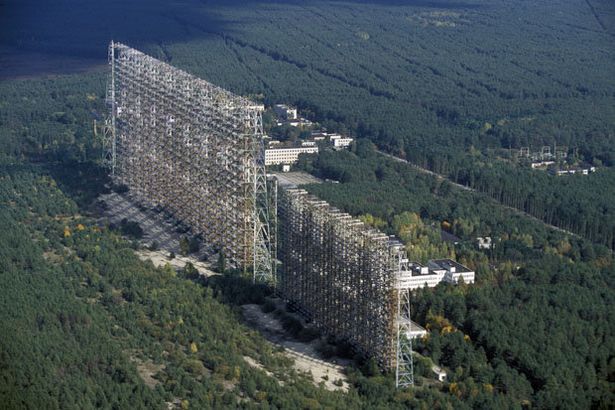
During the Cold War, the Soviet Union developed a secret radar system called Duga. Which aimed to detect incoming intercontinental ballistic missiles (ICBMs) from the United States. Located near Chernobyl in present-day Ukraine. The Duga radar system consisted of two massive structures over 150 meters tall and 500 meters long. Today, the abandoned radar station stands as a haunting reminder of the Cold War. However, the arms race between the United States and the Soviet Union.
Construction on the Duga radar system began in 1976 and took over three years to complete. The radar was a classified project, and the Soviet authorities kept its existence a secret from the outside world. Although it was massive in size. The radar system remained hidden from view behind dense forests and was guarded by high-security measures.
The Duga radar system operated on a frequency range of 7 to 19 MHz, which was higher than most traditional radars. This higher frequency allowed the system to detect incoming missiles from a greater distance. They made it an essential part of the Soviet Union’s missile defense strategy. The radar’s distinctive, repetitive clicking sound earned it the nickname “the Russian Woodpecker” from Western intelligence agencies.
In addition to its military function, the Duga radar system had an unintended consequence. The radar’s signals interfered with radio and television transmissions around the world, causing disruptions and interference that affected millions of people. The Soviet authorities denied the existence of the radar system for years, leading to widespread speculation and conspiracy theories.
Today, the rusted, towering structures of the Duga radar station stand as a ghostly reminder of the Cold War. The arms race between the United States and the Soviet Union. Following the abandonment of the radar system and the surrounding area’s decay after the collapse of the Soviet Union.
The eerie beauty and historical significance of the Duga radar system have attracted visitors and adventurers from around the world in recent years. Despite the dangers of radiation exposure. Many people have ventured into the abandoned site to explore its decaying buildings and climb to the top of the massive radar towers.
The Duga radar system stands as a testament to the lengths to which the United States and the Soviet Union went to protect their national security during the Cold War. Its haunting presence serves as a reminder of the destructive power of nuclear weapons and the importance of diplomacy and international cooperation in preventing their use.
